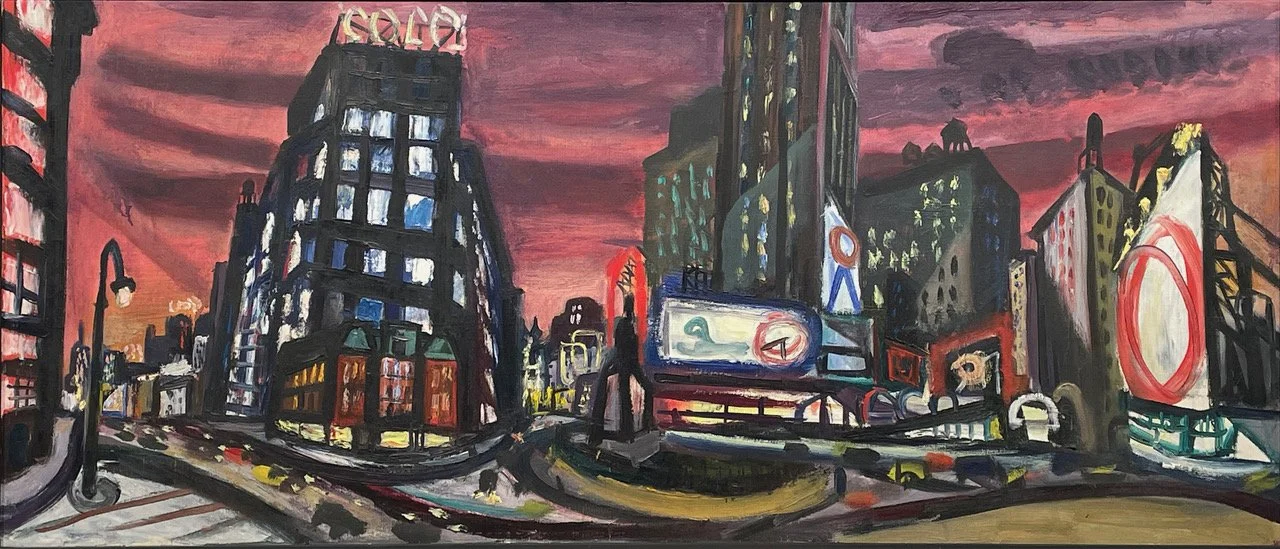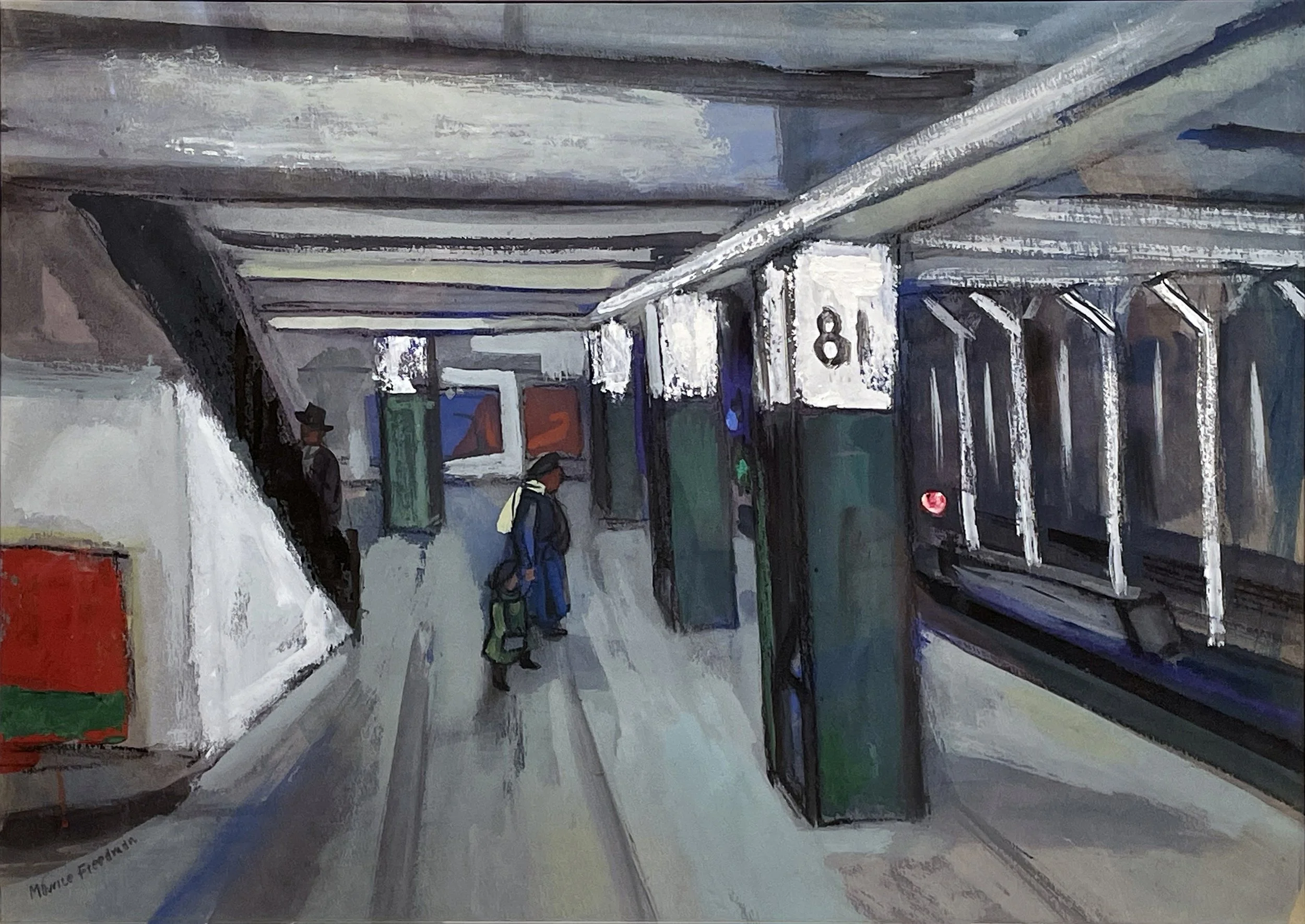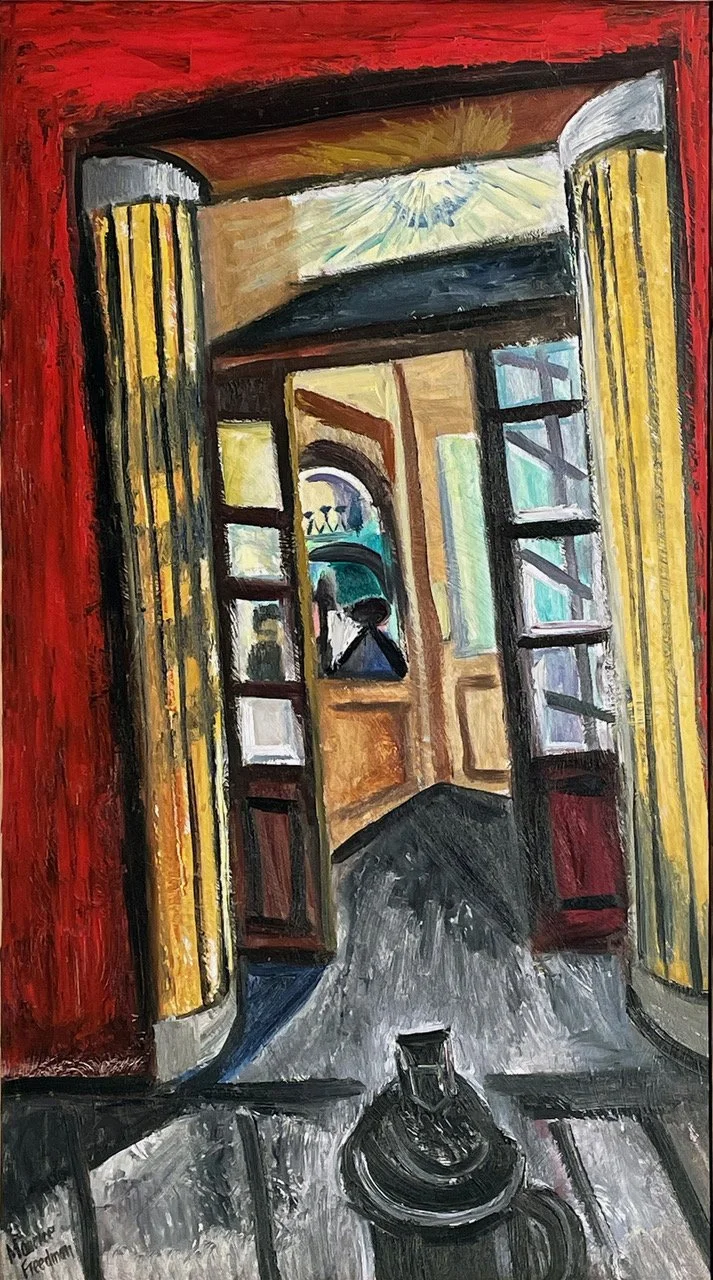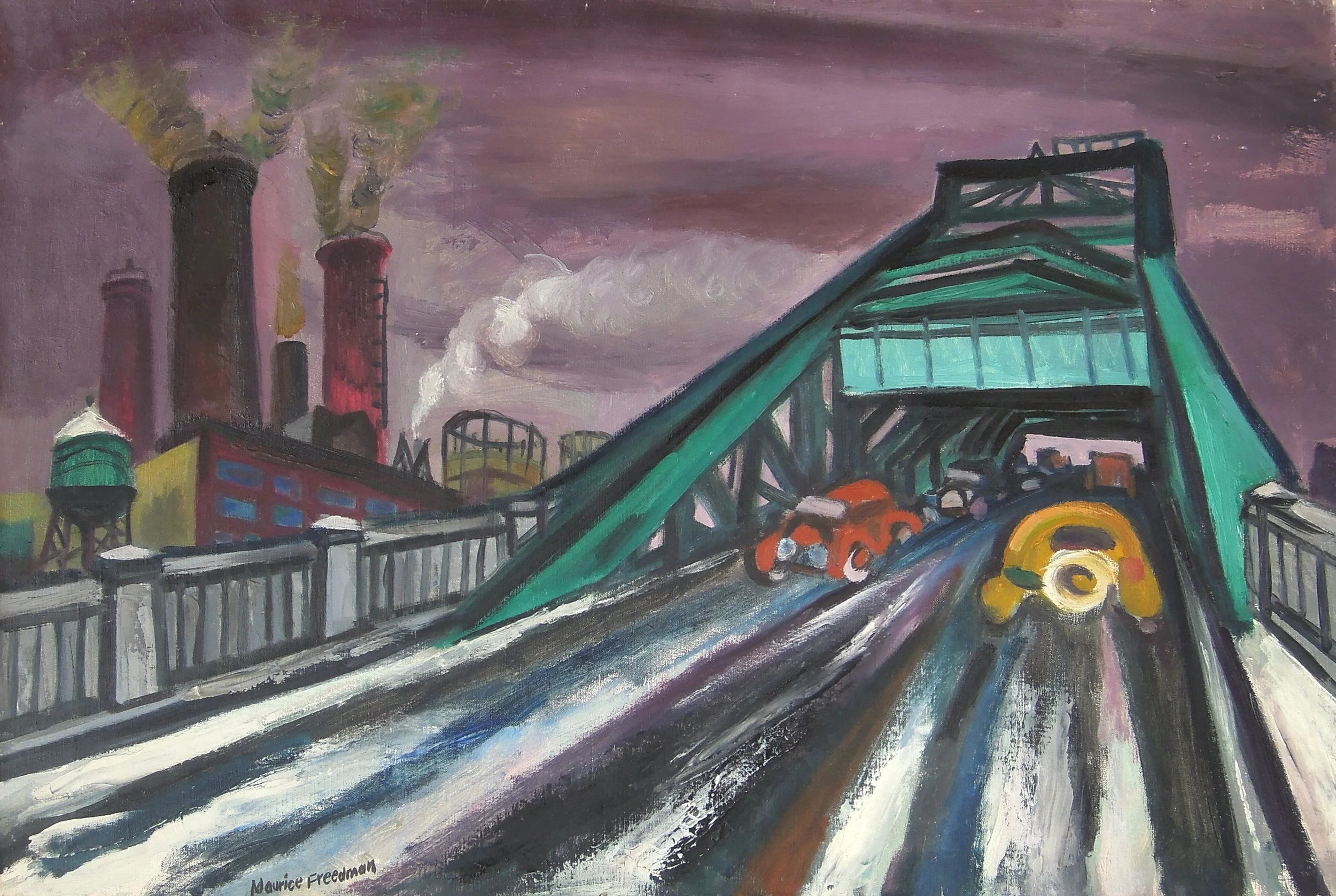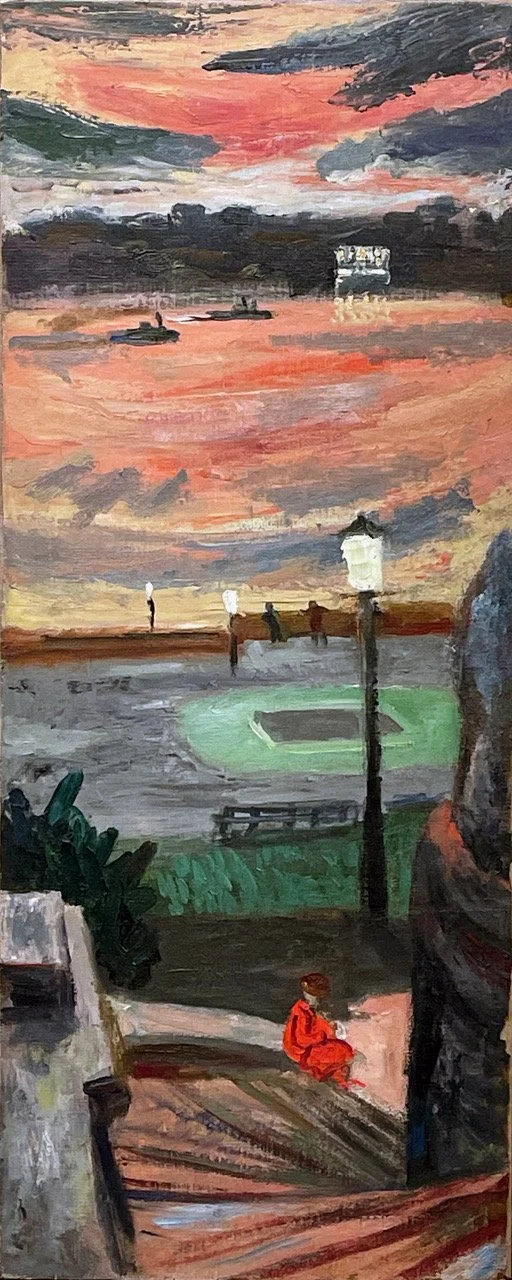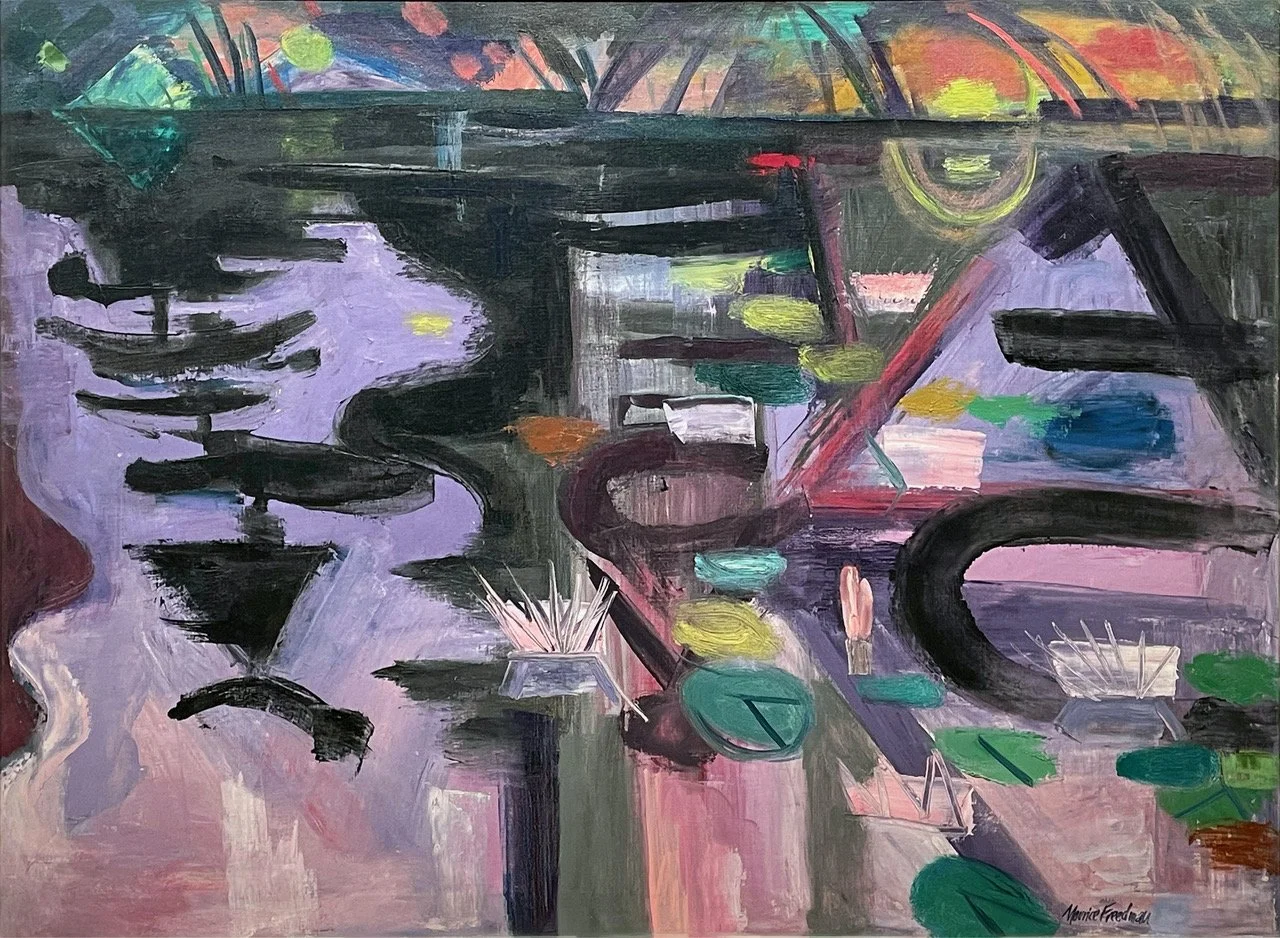MAurice Freedman: In the eye of the Beholder, the new york to Maine Connection
Maurice Freedman: In the Eye of the Beholder:, The New York to Maine Connection
Essay by Mary Sherman
Nearly 100 years have passed since Maurice Freedman left Boston for the bright lights of Manhattan. There, he joined his peers, eager to steer the art world’s attention their way. For Freedman, his break came in 1933, the year he joined the prestigious Midtown Galleries.
But before establishing himself in New York, Freedman made a crucial detour to Paris. Although he admired the dazzling brushwork of the American Ashcan School, he was after more than depictions of democracy’s gritty reality. He wanted to not just mirror his age but to embody it as well. And Paris was, hands down, the place for that.
During his time abroad, Freedman studied the Cubist canvases of artists like Paul Cezanne to develop a style that married his already bravura technique with a new pictorial language, projecting multiple perspectives onto a single plane. From artists like Paul Gauguin and Henri Matisse, he learned to free his palette, ratcheting up the intensity of his colors to create syncopated rhythms of off-kilter hues as in “Entrance to Jordan’s Bar”, whose warm interior draws viewers away from the noisy, lurid strokes outside, into a brightly lit room beyond. In “Riverside Park,” he does something similar. Sweeps of a dusky mauve recreate twilight’s melancholy sway. But then Freedman counters the impending gloom with a fiery red figure, defiantly looking out from the canvas, under a streetlight’s high-pitched flow as if daring the night to descent.
These qualities run throughout Freedman’s New York work. From the raucous neon billboards and towering skyscrapers, arcing forward and back across the congested rose lit sky of “Times Square,” to the clotted, smoke-filled backdrop of “Pulaski Skyway,” Freedman’s imagery careens between the celebratory heights of the jazz age and the sober reckoning of the city’s darkened alleys – from the glittering cockpit view of “New York Nocturne,” to the daily grind of the grey toned “Subway 81st Street.” Like Edward Hopper’s use of dead-end diagonals, the tracks in Freedman’s nearly deserted subway lead to an abrupt about-face. Staring back is a red sign, clearly suggesting, “Stop. You’ve reached the end of the line.”
As his friends Marsden Hartley and John Marin discovered, Freedman found New York City best taken with a chaser of respite. For Freedman, his New England roots answered the call, Maine being chief among them. There he sought to recharge his energy and try new things. Freedman embraced the region’s proud seafaring past, as in the jewel-toned, “Enveloping Night,” and its fiercely beautiful, natural habitat as seen in “Mountain Stream” and “Forest Struggle,” He encapsulated the breathtaking, starkness of winter in works such as “Winter Formations.” In the rhythmic zig-zag shapes observed from his train rides along the Hudson River in “River Thaw,” he anticipated Maine’s hard-won summer repose, delivered in ‘Harbor Haze,” “Stonington Pond,” and “Stonington Lily Pond,” whose abstracted reflections shimmer like the jeweled facets of a Tiffany lamp.
To this Freedman added the sheer joy of being a part of it all. His jubilant handling of full-throated color patterns, punctuated by small flecks of viridian and orange dancing along the surface of “Newton Falls,” bursts with energy. “Orange Clock Still Life” and “Mountain Laurel” brim with the warmth and charm of being nestled within the great outdoors, accompanied by vivid arrangements of flowers picked on walks and a moment of calm at the end of a delightful day. This feeling is, also, so sweetly depicted in “Serenade to Bruno.” In these works, Freedman not only shows us the world around us, but he also stirs out hearts’ yearnings to partake of its magnificence.
Mary Sherman is the founding director of the international arts organization Transcultural Ex-change and an art critic who began her writing career in the 1980s as the critic for the Chicago Sun-Times. Since then, she has served as a regular contributor and freelance writer for a number of publications, including the Boston Globe, Boston Herald, ART News, Art New England, artsfuse and Hyperallergic.
Maurice Freedman was born in Massachusetts, lived in New York, and painted in Maine. His desire to become an artist developed early, and, in high school, he took classes at the School of the Museum of Fine Arts, Boston until 1921. Freedman then enrolled at the Massachusetts Normal School of Art (Massachusetts College of Art) in 1922 where he also earned a scholarship to continue his studies. In 1926, he enrolled at the Art Students League. There only a year, he believed diving into the art scene overseas would be a better use of his time and talent, and he moved to France where he took classes at Calarossi’s and the Académie de la Grande Chaumière. A year later, he was discovered, and his work purchased for the Lambert Collection. Upon his return to the U.S., he secured life-long gallery representation at Midtown Galleries in New York.
In Maine, Freedman’s work can be seen in these public collections: Bates College Museum of Art, Bowdoin College Museum, Portland Museum of Art, Ogunquit Museum of American Art, Monhegan Museum of Art and History. A select list of museum collections across the country: Brooklyn Museum, NY, Butler Institute of American Art, OH, Carnegie Museum of Art, PA, Denver Art Museum, CO, Los Angeles County Museum of Art, CA, Milwaukee Art Museum, WI, New Britain Museum of Art, CT, Peabody Essex Museum, MA, Pennsylvania Museum of Fine Arts, PA, Provincetown Art Association and Museum, MA, Smithsonian Museum of Art and History, Washington D.C.
(CLICK IMAGE TO ENLARGE; CURSOR OVER ENLARGED IMAGE FOR DETAILS)

